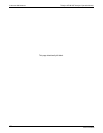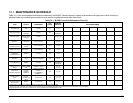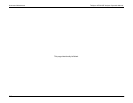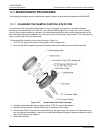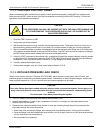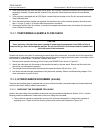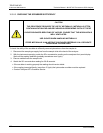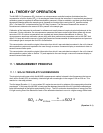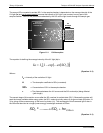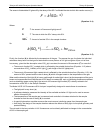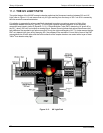
TELEDYNE API
Instrument Maintenance Technical Manual - M100E UV Fluorescence SO2 Analyzer
216
4. If the instrument has the zero and span valve option, the normally closed ports on each valve should also be
separately checked. Connect the leak checker to the normally closed ports and check with soap bubble
solution.
5. If the analyzer is equipped with an IZS Option, connect the leak checker to the Dry Air inlet and check with
soap bubble solution.
6. Once the leak has been located and repaired, the leak-down rate of the indicated pressure should be less
than 1 in-Hg-A (0.4 psi) in 5 minutes after the pressure is turned off.
7. Clean soap solution from all surfaces, re-connect the sample and exhaust lines and replace the instrument
cover. Restart the analyzer.
10.3.7. PERFORMING A SAMPLE FLOW CHECK
CAUTION
Use a separate, calibrated flow meter capable of measuring flows between 0 and 1000 cm³/min to
measure the gas flow rate though the analyzer. Do not use the built in flow measurement viewable from
the front panel of the instrument.
Sample flow checks are useful for monitoring the actual flow of the instrument, to monitor drift of the internal flow
measurement. A decreasing, actual sample flow may point to slowly clogging pneumatic paths, most likely critical
flow orifices or sintered filters. To perform a sample flow check:
1. Disconnect the sample inlet tubing from the rear panel SAMPLE port shown in Figure 3-1.
2. Attach the ou
tlet port of a flow meter to the sample inlet port on the rear panel. Ensure that the inlet to the
flow meter is at atmospheric pressure.
3. The sample flow measured with the external flow meter should be 650 cm³/min 10%.
4. Low flows indicate blockage somewhere in the pneumatic pathway. Refer to troubleshooting chapter 12 for
more information on how to fix this
.
10.3.8. HYDROCARBON SCRUBBER (KICKER)
There are two possible types of problems that can occur with the scrubber: pneumatic leaks and contamination that
ruins the inner tube’s ability to absorb hydrocarbons.
10.3.8.1. CHECKING THE SCRUBBER FOR LEAKS
Leaks in the outer tubing of the scrubber can be found using the procedure described in Section 10.3.6. Use the
following method to determine if a leak exists in the inner tubing of the scrubber.
This procedure requires a pressurized source of air (chemical composition is unimportant) capable of
supplying up to 15 psiA and a leak checking fixture such as the one illustrated in Figure 10-3.
04515F DCN6048



